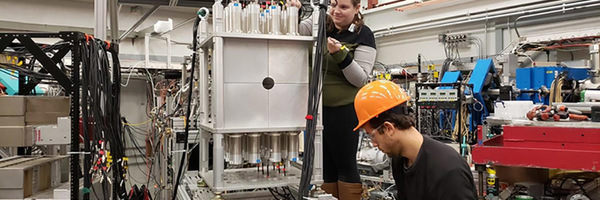
HECTOR
Measurements of proton and alpha particle capture reactions is an important step towards understanding the stellar nucleosynthesis processes, however, such measurements, in particular on heavy nuclei, pose a lot of challenges. The high Coulomb barrier probability of capturing a charged particle is very low, thus the reaction cross sections are very small and difficult to measure. Also, the level scheme and polarity of the transitions of the produced nucleus have to be known, to properly account for various possible branchings and angular distribution of the γ rays. These obstacles can be bypassed by using a γ-summing technique: instead of searching for individual transitions, the γ-rays from each cascade following a particle capture are simultaneously detected within a large volume detector and produce a signal proportional to the sum of the reaction Q-value and the beam energy.
For this purpose, a NaI(Tl) detector, HECTOR (High Efficiency TOtal absorption spectrometeR) has been developed at NSL and build by St. Gobain Crystals. It is an array of 16 crystals, each 4x8x8 inches in size. Each crystal is contained in an aluminum housing and read by two photomultipliers. The crystals are arranged in a frame to form a cube 16x16x16 inches with a 60 mm borehole in the center for beam pipe and target. The size of the detector ensures high detection efficiency even for high-energy γ rays and allows for measurements of the cross section as low as 10 μb. This limit and be extended to even lower values if the summing detector is used with a cosmic-ray veto detector.
To improve the resolution of the detector, the signals from photomultipliers are recorded individually and then gain-matched and summed off-line. The total energy deposited in the detector might be spread among multiple crystals or deposited in a single one. This requires a data acquisition system that can handle a wide dynamic range of the events. For this purpose, the detector is equipped with a digital data acquisition system (DDAS) based on the PIXIE-16 modules. DDAS provides a wide dynamic range (up to 30 MeV) with a low threshold to minimize the loss of information when the sum-peak energy is distributed among multiple crystals.